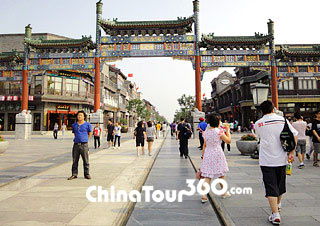 An Ancient Archway
An Ancient Archway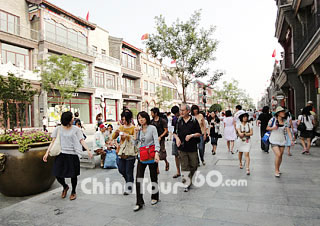 Visitors in Qianmen Street
Visitors in Qianmen Street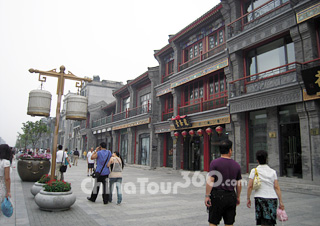 Beijing Qianmen Street
Beijing Qianmen Street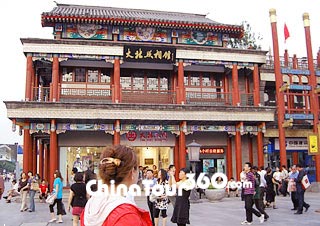 Dabei Photo Shop
Dabei Photo Shop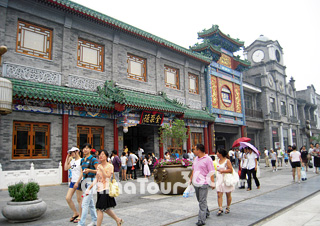 Qianmen Street Scene
Qianmen Street Scene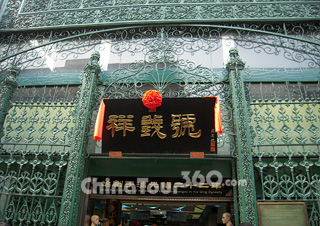 Xiangyihao Silk Shop
Xiangyihao Silk Shop
Famous for its architecture, business, folk-custom and operatic culture, Qianmen Street has been a distinctive street since the Ming (1368 - 1644) and Qing (1644 - 1911) Dynasties. With 700 years of history, the 845-meter Qianmen Street starts from Zhengyang Gate (Zheng Yang Men) in the north and ends at Zhu Shi Kou Street in the south. Yongle Emperor of the Ming Dynasty made Beijing the capital, and built it around a central axis from south to north; the inner town had nine city gates; Zhengyang Gate was in the center of south town, usually called Qianmen.
Qianmen is a district that most integrally preserves the local scenes, historical sites and cultural relics. Many architectures with Chinese and western styles are preserved, including former sites of Qianmen railway station and China Bank of Communication, which are full of classical European architectural style, while Quan Ju De and Yue Sheng Zhai still keep their primitive and simple Chinese style. Double eave roofs and royal colored drawings reflect the ancient charm, and some buildings have adopted relief sculptures such as flowers, birds and atlas decorating walls, embodying distinctive feelings of the Republic of China.
Since the one-year-long reconstruction finished in May 2008, Qianmen Street has reproduced old Beijing's look and flavor: streetcars, decorated archway (pailou) and bird cages as well as bronze drums all familiar to Beijing people reappear on the street.
The reconstruction plan is in accordance with old photos of Qianmen of the old time. The buildings on the two sides of Qianmen Street are low-rise buildings; one part is two storey buildings with green tile and red pillar, which imitate the architectural style of the Qing Dynasty. Another part of the buildings imitate the architectural style of the Republic of China, adopting brick and cement structure and every building hanging a plaque with golden characters on the black.
When entering the street, visitors can first see the Zhengyangmen Bridge and Wu pailou (decorated archway). Located in Zheng Yang Men, Wu Pai Lou (decorated archway) is restored in accordance with its original appearance. Supported by 6 red pillars, at every pillar's base are two stone carved lions, one standing in front, another in the rear. 12 stone carved lions guard the decorated archway; their bases are engraved with dragons, phoenixes and kylin, symbolizing auspicious meanings.
Roaming along the Qianmen Street, visitors can take streetcars for free, visit time-honored stores such as Yue Sheng Zhai, Quan Ju De and Guang He Grand Theater and immerse themselves in the nostalgic and modern atmosphere. At the south end of the Qianmen Street, a 6,000-square-meter (1.5 acres) place gather old brands of catering industry together, offering different kinds of traditional foods. Along the both sides of the street, many special street lamps are hung. Their appearances imitate bird cages, rattle-drums and candied haws on sticks, filling the street with Beijing flavor.
![]() Entrance Fee: Free
Entrance Fee: Free
![]() Transportation:
Transportation:
A. Bus Routes: Take Bus No. 5, 8, 9, 17, 20, 22, 44, 48, 59, 66, 67, 69, 71, 120, 126, 201 (Night), 203 (Night), 209 (Night), 212 (Night), 301, 337, 646, 673, 690, 692, 723, 729, 803, 808 or 826 and get off at Qianmen Stop.
B. Subway: Take Subway Line 2 and get off at Qianmen Station.








